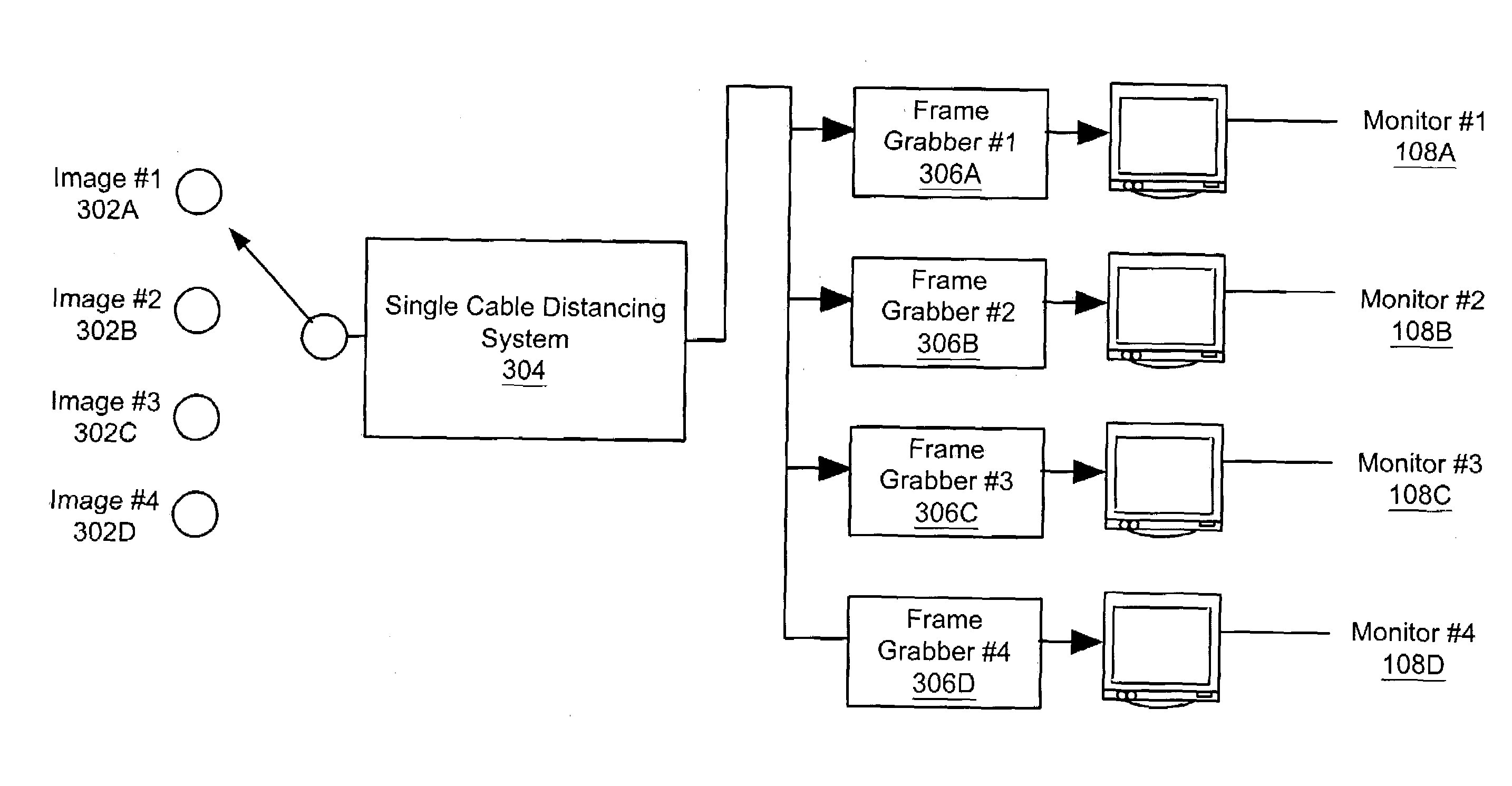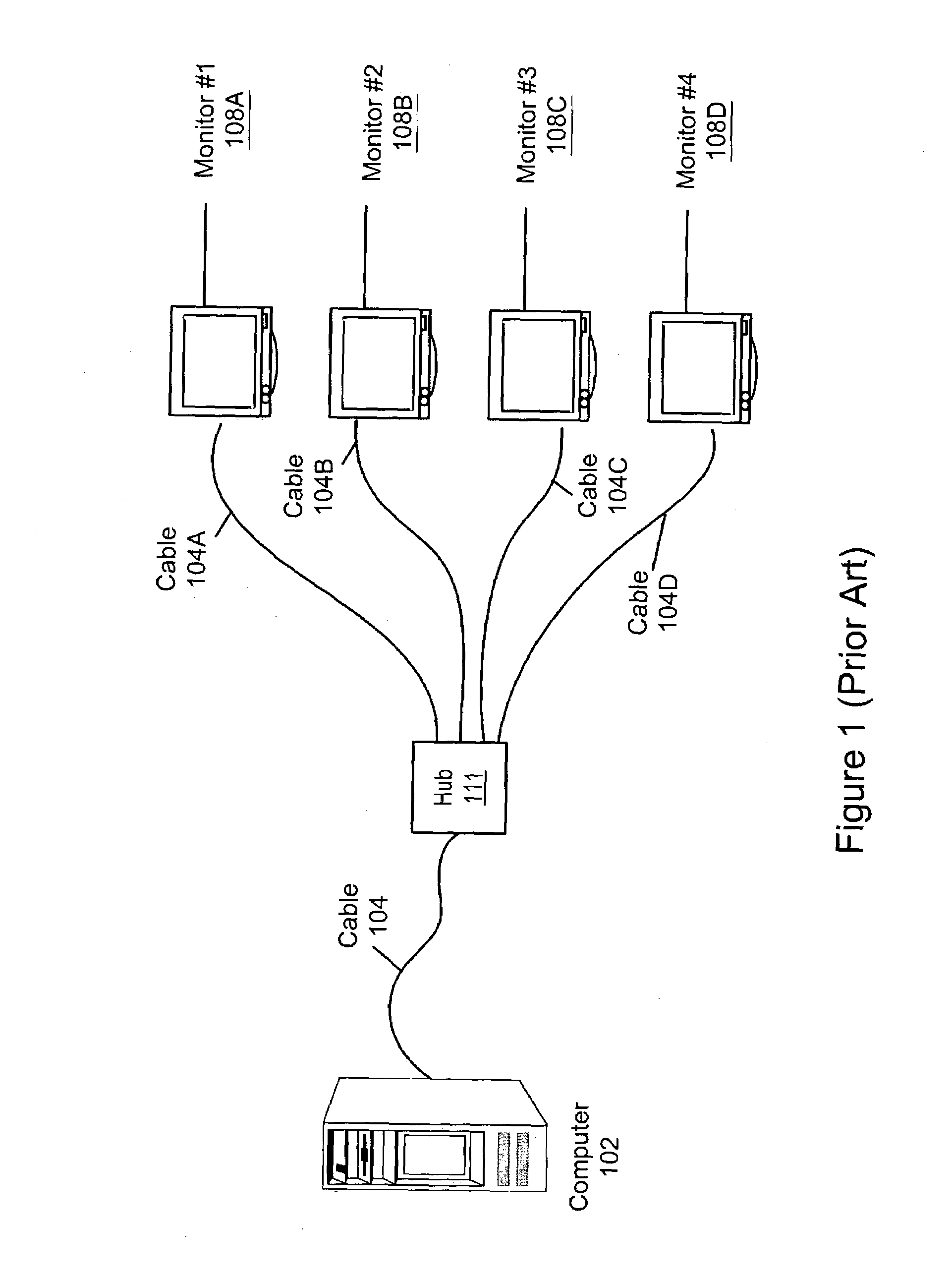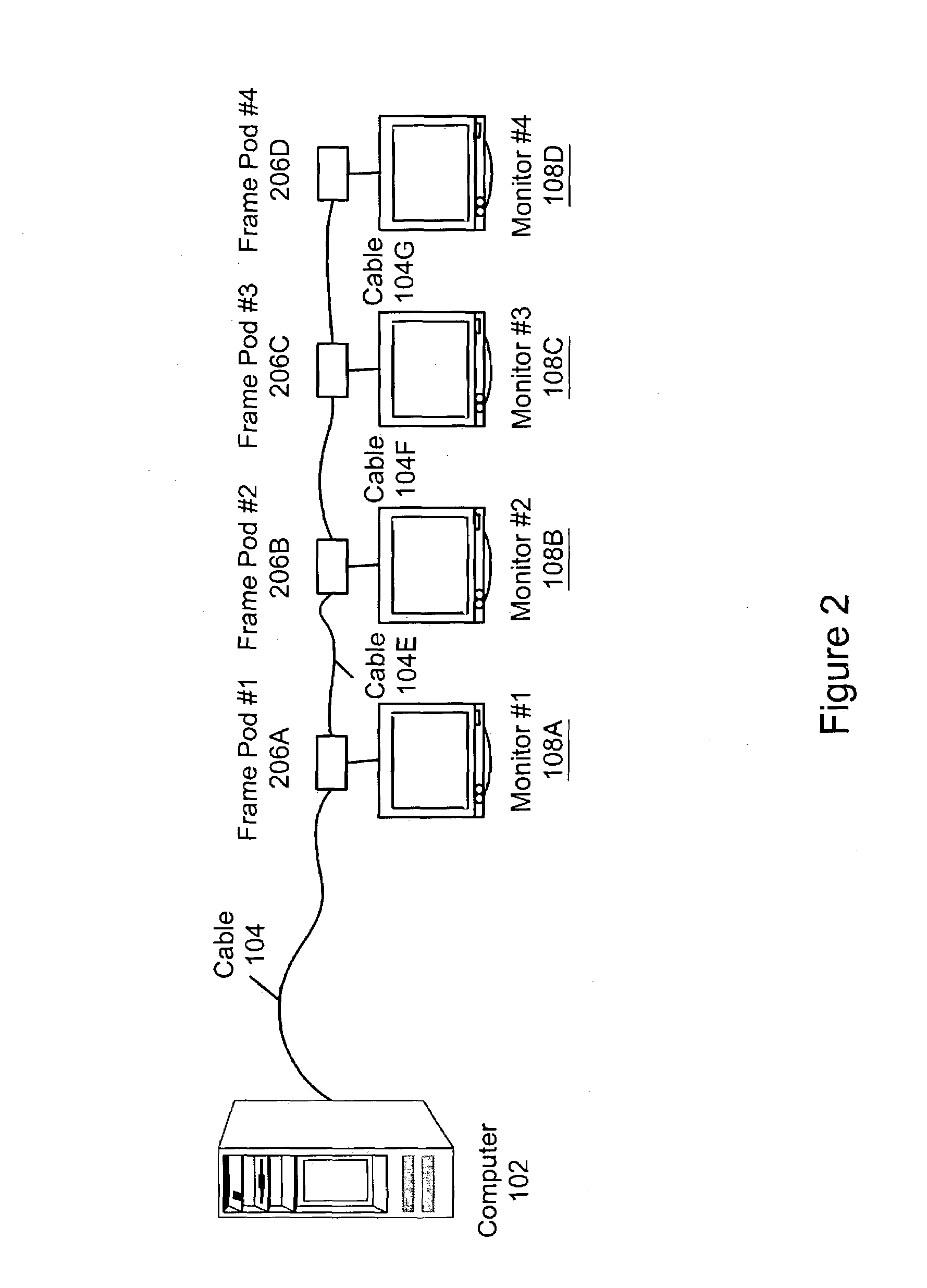Selectively updating a display in a multi-display system
a multi-display system and display device technology, applied in two-way working systems, digital computers, instruments, etc., can solve the problems of limiting the usability and flexibility of the system, the cost of providing multiple video cards for the computer system, and the limitation of the number of monitors supported (usually two or three), so as to improve the responsiveness of the human interface, improve the graphical data update rate, and improve the quality of the user experience
- Summary
- Abstract
- Description
- Claims
- Application Information
AI Technical Summary
Benefits of technology
Problems solved by technology
Method used
Image
Examples
Embodiment Construction
Incorporation by Reference
[0053]The following patents and patent applications are hereby incorporated by reference as though fully and completely set forth herein:
[0054]U.S. Pat. No. 6,012,101 titled “Computer Network Having Commonly Located Computer Systems” issued on Jan. 4, 2000, whose inventors are Andrew Heller, Barry Thornton, Daniel Barrett, and Charles Ely;
[0055]U.S. Pat. No. 6,119,146 titled “Computer Network Having Multiple Remotely Located Human Interfaces Sharing a Common Computing System” issued on Sep. 12, 2000, whose inventors are Andrew Heller, Barry Thornton, Daniel Barrett, and Charles Ely;
[0056]U.S. Pat. No. 6,038,616 titled “Computer System With Remotely Located Interface Where Signals are Encoded at the Computer System, Transferred Through a 4-wire Cable, and Decoded at the Interface” issued on Mar. 14, 2000, whose inventors are Andrew Heller, Barry Thornton, Daniel Barrett, and Charles Ely;
[0057]U.S. Pat. No. 6,070,214 titled “Serially Linked Bus Bridge For Exp...
PUM
 Login to View More
Login to View More Abstract
Description
Claims
Application Information
 Login to View More
Login to View More - R&D
- Intellectual Property
- Life Sciences
- Materials
- Tech Scout
- Unparalleled Data Quality
- Higher Quality Content
- 60% Fewer Hallucinations
Browse by: Latest US Patents, China's latest patents, Technical Efficacy Thesaurus, Application Domain, Technology Topic, Popular Technical Reports.
© 2025 PatSnap. All rights reserved.Legal|Privacy policy|Modern Slavery Act Transparency Statement|Sitemap|About US| Contact US: help@patsnap.com



